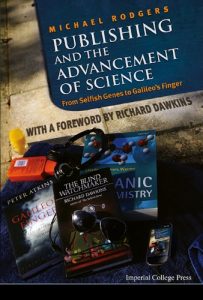Popular science books, selling in their thousands — even millions — help us appreciate breakthroughs in understanding the natural world, while highlighting the cultural importance of scientific knowledge. Textbooks bring these same advances to students; the scientists of tomorrow. But how do these books come about? And why are some of them so spectacularly successful?
This is the first ever insider's account of science publishing, written by an editor intimately involved in the publication of some of the most famous bestsellers in the field. Michael Rodgers reveals the stories behind these extraordinary books, providing a behind-the-scenes view of the world of books, authors and ideas. These vivid and engaging narratives illuminate not only the challenges of writing about science, but also how publishing itself works and the creative collaboration between authors and editors that lies at its heart.
The book (like many of those it describes) is intended for a wide readership. It will interest people in publishing, past and present, and also academics and students on publishing courses. Scientists exploring territories outside their own speciality will enjoy it, while there is invaluable advice for those planning their first popular book or textbook. It will also appeal to readers with a humanities background who, finding the concepts of science intriguing, want to know more about how they are developed and communicated.
Contents:- Foreword (Richard Dawkins)
- Prologue
- Hawking, Einstein, and Popular Science
- Discovering the World of Science and Scientists
- Falling Under the Spell of the Selfish Gene
- The Origins and Evolution of the College Science Textbook, and the Birth of a Superstar
- A Companion to the Mind, and Science in the Vegetable Garden
- r- and K-Selection, and the Extended Phenotype
- The Blind Watchmaker, and the Universe in Twenty Objects
- Bill Hamilton and John Maynard Smith: Working with Two Giants of Evolutionary Biology
- The Best Textbook of Organic Chemistry I Ever Hold in My Hands
- Scientific Anecdotes, the Ten Great Ideas of Science, ‘Science Writing at Its Best’
- Epilogue
- Notes and References
- Index
Readership: The general public and students who are interested in the relationship between science and publishing.






